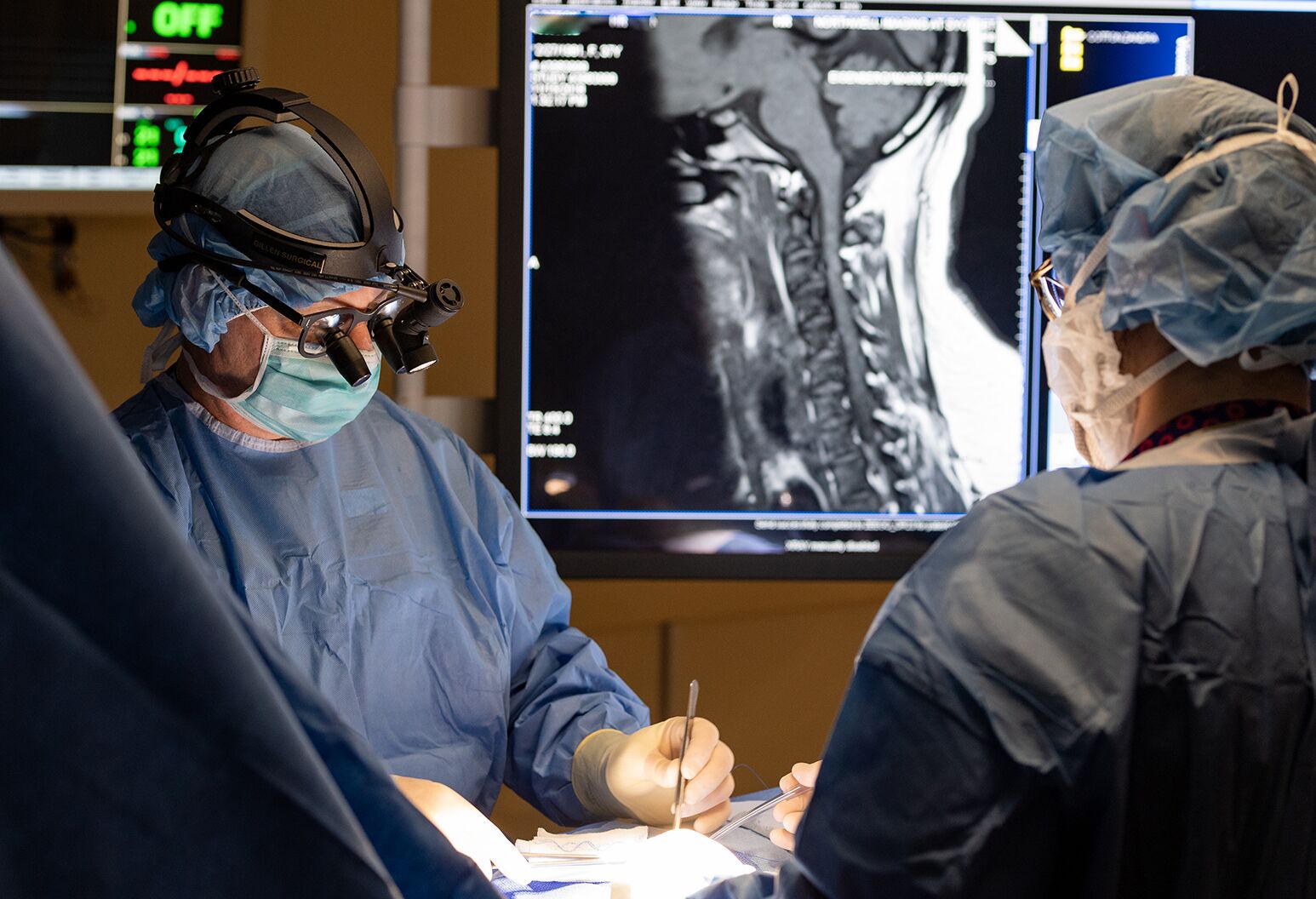Networking with the Best Spine Surgeons in St Louis MO for Comprehensive Treatment
Networking with the Best Spine Surgeons in St Louis MO for Comprehensive Treatment
Blog Article
A Review of Spinal Column Conditions That Often Cause Surgical Treatments
When traditional therapies fall short to alleviate persistent signs,Back problems such as herniated discs, back constriction, and degenerative disc condition regularly necessitate surgical interventions. These problems not just bring about substantial pain but can also severely impair daily functioning and general top quality of life. Understanding the subtleties of each problem and the corresponding medical options, such as discectomy or back combination, is crucial for effective administration. As we discover these conditions additionally, it ends up being evident that the decision-making procedure surrounding surgical therapy is diverse and warrants cautious consideration.
Herniated Discs
Although numerous people with herniated discs may find alleviation with conservative therapies, surgical treatment ends up being a required consideration when signs persist or get worse - best spine surgeons in st louis mo. A herniated disc takes place when the soft inner gel of a back disc sticks out with its outer layer, potentially leading and compressing neighboring nerves to discomfort, tingling, or weak point in the extremities
Conservative administration generally consists of physical therapy, pain medicines, and corticosteroid shots, which intend to reduce inflammation and boost function. In cases where these techniques fall short to reduce incapacitating symptoms, surgical choices might be discovered.
One of the most usual surgery for herniated discs is a discectomy, which includes the elimination of the herniated section of the disc to ease stress on the affected nerve origin. In more serious cases, spine combination may be needed to maintain the influenced vertebrae.
People are encouraged to go over the possible threats and advantages of surgery with their medical care provider to make an informed decision. Ultimately, the goal of any kind of medical treatment is to bring back function, ease discomfort, and boost overall lifestyle for individuals experiencing herniated discs.
Spine Constriction
Spine stenosis occurs when the areas within the back slim, causing boosted stress on the back cable and nerves. This problem can establish in different regions of the spine, including the cervical and back areas, typically due to age-related changes, such as degenerative disc disease, arthritis, or thickening of ligaments.
Patients with back constriction might offer with signs that include discomfort, feeling numb, tingling, or weakness, primarily in the legs or arms. These symptoms can be exacerbated by activities that entail standing or walking, frequently leading individuals to look for relief through conservative therapies like physical treatment, medications, or epidural steroid shots.
Nevertheless, when these non-surgical interventions stop working to offer sufficient alleviation, medical options may be thought about. Common medical procedures for spine constriction include laminectomy, which includes the elimination of component of the vertebra to alleviate pressure, and back fusion, which supports the afflicted location.
Spondylolisthesis
Spondylolisthesis takes place when one vertebra slides ahead over one more, leading to imbalance of the back. This condition can result from numerous aspects, consisting of hereditary defects, trauma, or degenerative modifications in the spinal column. It is most commonly observed in the back region, especially at the L4-L5 and L5-S1 degrees.

When non-surgical approaches stop working to alleviate symptoms or when considerable nerve compression is present, medical treatment may be called for. Surgical alternatives can consist of spine blend or decompression treatments, aimed at bring back positioning and relieving neurological signs.
Degenerative Disc Illness

Clients with DDD typically experience pain that may emit to the arms or legs, relying on the influenced region of the spine. The problem can be diagnosed with a combination of clinical examination, imaging studies, and patient background. Therapy alternatives usually begin with traditional steps, including physical therapy, pain monitoring, and way of life adjustments. Nevertheless, when these approaches fall short to offer sufficient relief, medical interventions might be taken into consideration.
Surgical options for DDD might consist of spinal fusion or fabricated disc substitute, targeted at stabilizing the influenced segment and alleviating discomfort (best spine surgeons in st louis mo). Inevitably, the choice of treatment is individualized, taking into consideration the severity of the problem, client health and wellness, and way of living variables
Spinal Growths

Back tumors can develop from various aspects, including genetic proneness, environmental influences, and pre-existing clinical problems. Patients may provide with a range of signs, including local discomfort, neurological shortages, weakness, or changes in digestive tract and bladder function, depending on the growth's dimension and area.
Medical diagnosis generally includes imaging researches such as MRI or CT checks, which help define the tumor's features and influence on surrounding frameworks. In assessing treatment alternatives, the growth's area, kind, and quality are vital factors to consider. Surgical treatment might be necessitated to reduce signs and symptoms, acquire a biopsy, or eliminate the growth entirely. The goal of surgery is usually to unwind neural elements and stabilize the spine. Adjuvant treatments, consisting of radiation or radiation treatment, might also be necessary depending on the lump's nature. Early detection and investigate this site treatment are vital for enhancing outcomes in patients with spinal growths.
Conclusion
In recap, spinal column conditions such as herniated discs, spine stenosis, spondylolisthesis, degenerative disc illness, and spinal growths frequently require surgical intervention because of their prospective to cause significant discomfort and useful impairment. While conventional therapies might offer short-term relief, surgical alternatives end up being important when websites symptoms intensify or continue. Timely medical diagnosis and intervention play an important role in recovering feature and boosting the high quality of life for affected individuals, underscoring the importance of detailed spine care.

Report this page